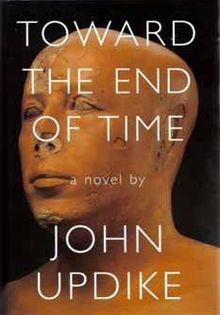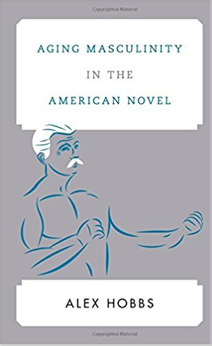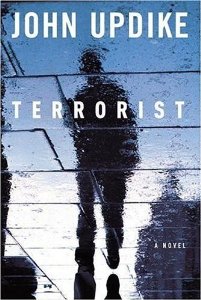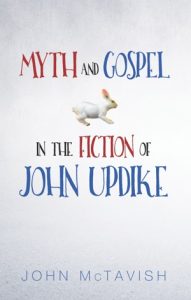 Ed Phillips, a polyolefin specialist by profession and the most recent member to join The John Updike Society, says he reread John Updike’s Toward the End of Time and “realized how more timely it is today compared to when it was released in 1997.”
Ed Phillips, a polyolefin specialist by profession and the most recent member to join The John Updike Society, says he reread John Updike’s Toward the End of Time and “realized how more timely it is today compared to when it was released in 1997.”
At least in America, Phillps writes, “1997 was a relatively calm year” that was “way pre-9/11. Nobody had heard of al Qaeda or Osama Bin Laden except the CIA. NEOCONS biding their time. Arguably the biggest story of 1997 was the death of Princess Diana . . . .
“Updike was 66 at the time, writing about 66-year-old Ben Turnbull, a comfortably retired wealth management manager living with his second wife in a seaside manse outside of Boston in the year 2020,” and Phillips, now 66 himself, decided it would be a good time to reread the novel . . . .
“It’s been 20 years, but I don’t recall it as one of Updike’s more memorable books. Normally for me his writing often blurs the line between extremely fine prose and poetry. I love gliding through his 150-word descriptive sentences. But the critics were not too fond of it either. One predicted that he had run out of juice. Thank goodness that wasn’t true. Maybe he was just intellectually exhausted from writing In the Beauty of the Lilies, perhaps his best work, just the year before. But Toward the End of Time was dark. An ineffectual Congress led by an incompetent President Smith had gotten the United States into a failed nuclear war with China. What a preposterous storyline! Vast areas have been seriously ‘de-populated.’ Our infrastructure and economy are badly damaged, travel between coasts is impossible, the dollar has been replaced with local emergency currency, script that is used to pay off entrepreneurs for basic services and security.
“Updike paints Turnbull as a man far past 66. I can say this being 66. Admittedly, though there are days when I feel much older. . . .
“No one can ‘observe’ like Updike. Read Just Looking (1989) or Still Looking (2005), Updike’s essays on art. They are works of art in themselves. But in Toward the End of Time, through Turnbull he describes every leaf and every petal and pistol and stamen in his wife’s gardens as they evolve and change texture and color and decay and smell over the course of four seasons. Almost as fillers, Updike throws in some golf talk and religious history and a few Vonnegutiann sci-fi elements.
“But Turnbull (Updike?) is also obsessed with sex, the act, in uncomfortable and incredibly graphic detail, fluids and all and has or recalls a lot of it throughout the book until of course he, Trumbull, being 66, becomes impotent and incontinent (again with the fluids) as a result of prostate surgery.
“Twenty years after its release, we are living in darker and certainly more uncertain times and the storyline doesn’t seem so preposterous now, and neither does the mood. Updike couldn’t possibly have foreseen the first 100 days of the Trump administration. But Toward the End of Time is far timelier now and should be given a second read. When Kellyanne Conway spoke the term “Alternative Facts” in a CNN interview, sales of Orwell’s 1984 shot up to #3 on the best seller list, with sales increasing by 10,000 percent. I think Toward the End of Time is far more relevant.
 It’s been out for a year, but sometimes it takes a while to discover academic books. One of those titles that was displayed at the recent American Literature Association conference in Boston was Aging Masculinity in the American Novel, by Alex Hobbs, published by Rowman & Littlefield in May 2016.
It’s been out for a year, but sometimes it takes a while to discover academic books. One of those titles that was displayed at the recent American Literature Association conference in Boston was Aging Masculinity in the American Novel, by Alex Hobbs, published by Rowman & Littlefield in May 2016.







